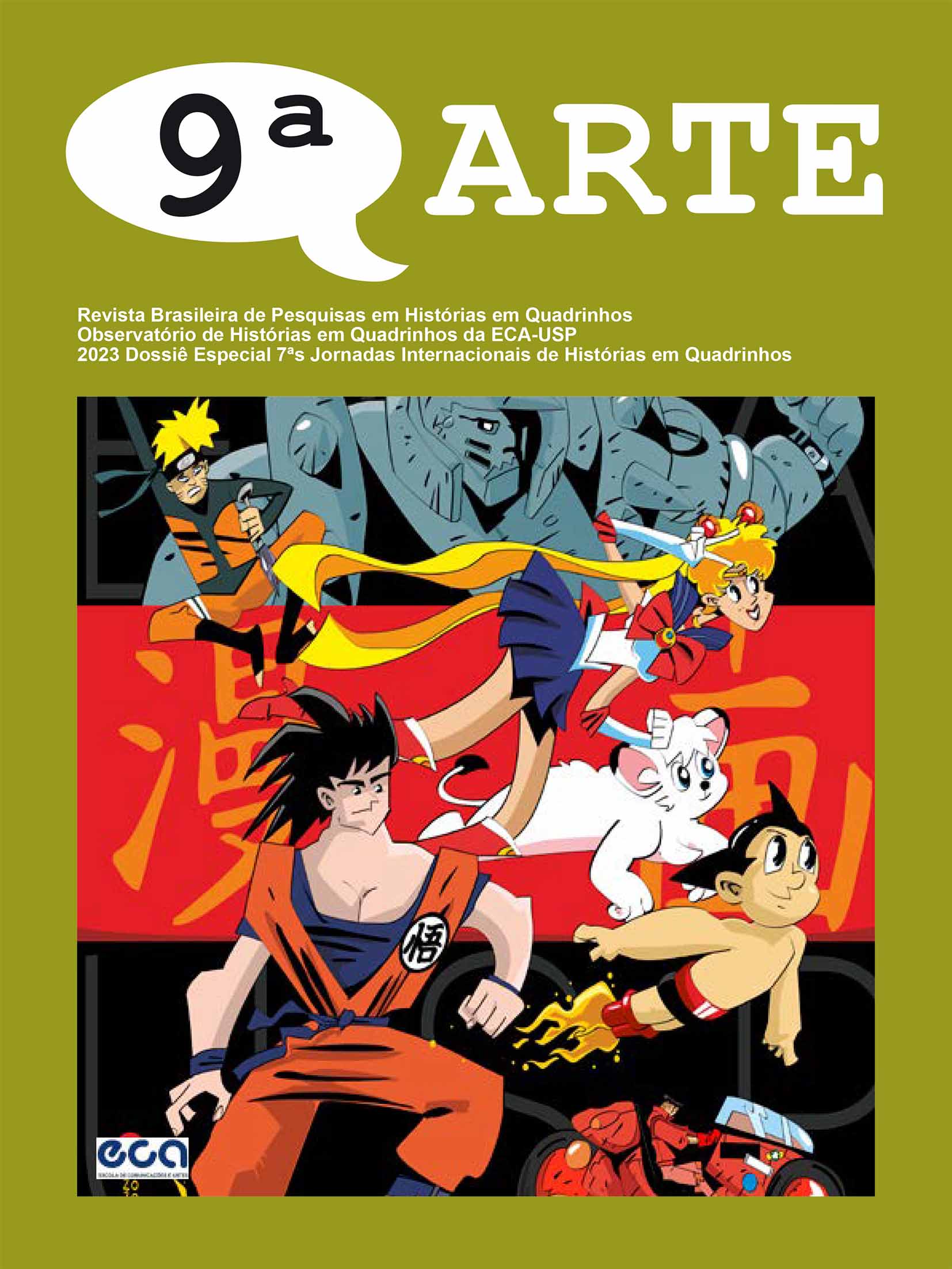The (non)limits of the regular layout: the empty space in the gridding of Hedra
DOI:
https://doi.org/10.11606/2316-9877.Dossie.2023.e219144Keywords:
Comics, Gridding, Arthrology, Empty spaces, AestheticsAbstract
It explores the empty spaces on the comics page based on its materiality. However, it is not about gutters. The objective is to understand how these spaces influence visual and narrative dynamics of the page. The starting point here is the concept of regular layout (Groensteen, 2015, p.103) and how these empty spaces can influence it. To this end, combining visual theory and arthrology, a case study will be made using the work Hedra by Jesse Lonergan. The objective is to show how the omission of frames creating empty spaces allows manipulating the composition of the page without completely breaking with the fixed structure that the regular layout proposes. It is understood that there is a dynamic of fulfilled and subverted expectations where empty space becomes a rhetorical and poetic element.
Downloads
References
CARRIÓN, Ulises. A nova arte de fazer livros. Belo Horizonte: C / Arte, 2011.
CIRNE, Moacy. Quadrinhos, sedução e paixão. Petrópolis: Editora vozes, 2000.
FRESNAULT-DERUELLE, Pierre. Du linéaire au tabulaire. Communications: La bande dessinée et son discours, Paris, n. 24, p. 7-23, 1976. Disponível em: https://tinyurl.com/ye83rdy3. Acesso em: 01 dez. 2023.
FLUSSER, Vilém. Linha e superfície. In: FLUSSER, Vilém. O mundo codificado. São Paulo: Cosac Naify, 2007. p.101-125.
GROENSTEEN, Thierry. O sistema dos quadrinhos. Nova Iguaçu: Marsupial Editora, 2015.
GROENSTEEN, Thierry. Comics and narration. Mississippi: University Press of Mississippi, 2013.
LONERGAN, Jesse. Hedra. Portland: Image Comics, 2020.
NAKAMA, Yuko. Invisible air: how it is made visible in Japanese art. Art Research, Kyoto, v. 1, Special Issue,.2020. Disponível em: https://tinyurl.com/29jhf4jm. Acesso em: 03 dez. 2023.
OKANO, Michiko. Ma: Entre-Espaço da comunicação no Japão: um estudo acerca dos diálogos entre Oriente e Ocidente. Tese (Doutorado em Comunicação) - Pontifícia Universidade Católica de São Paulo, São Paulo, 2007. Disponível em: tinyurl.com/555kmuya. Acesso em: 01 dez. 2023.
RICHARDSON, Louise. Seeing empty space. European Journal of Philosophy, York, v. 18, n. 2, p. 227-243, jun. 2009. Disponível em: tinyurl.com/548r3utn. Acesso em: 01 dez. 2023.
Downloads
Published
Issue
Section
License
Copyright (c) 2023 9 Arte (São Paulo)

This work is licensed under a Creative Commons Attribution 4.0 International License.

Este obra está licenciado com uma Licença Creative Commons Atribuição 4.0 Internacional.



